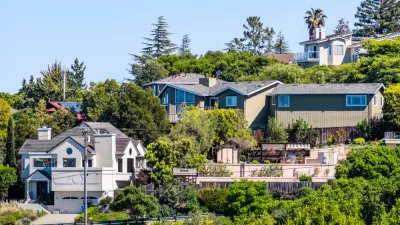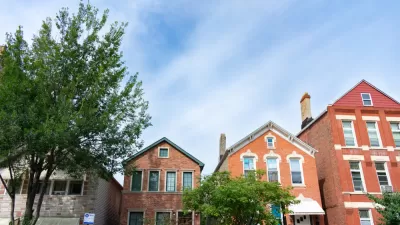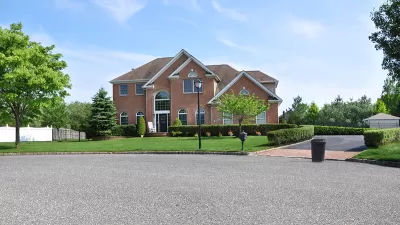Redwood City, located on the San Francisco Peninsula, will make it harder to build homes that take up more than 45 percent of a residential lot.

"As more developers raze starter homes to build extravagant monster homes in Redwood City, the City Council has escalated its approach to protecting the city’s landscape and its diversity," reports Maggie Angst.
"Redwood City Council on Monday night voted unanimously to add a layer to the city’s permit approval process by requiring that new homes that cover 45 percent of a lot or are 3,000 square feet or more go before the planning commission for review," adds Angst.
The change represents a layer of discretionary approval usually required of multi-family residential, rather than single-family residential developments.
Still, the argument in favor of the discretionary review of large single-family projects is motivated by a similar concern for the character of the surrounding neighborhood, and the context created by existing residential buildings in the area. "Several proposed projects and homes built by developers recently have caused an uproar among some residents who complain that the new projects lack compatibility with existing neighborhoods and are making it more difficult for young families to live in the city," according to Angst.
The City Council decided against a proposal by the Redwood City Planning Commission to adjust its zoning code and residential design guidelines to limit residences to 40 percent coverage of the lot area or a maximum size of 2,500 square feet.
The story about Redwood City preventing homes from getting too large in residential neighborhoods also contrasts the story of a plan in a New York City neighborhood that would allow single-family residences to be built larger.
FULL STORY: Redwood City tries to stop developers building ‘monster homes’ for maximum profit

Study: Maui’s Plan to Convert Vacation Rentals to Long-Term Housing Could Cause Nearly $1 Billion Economic Loss
The plan would reduce visitor accommodation by 25,% resulting in 1,900 jobs lost.

North Texas Transit Leaders Tout Benefits of TOD for Growing Region
At a summit focused on transit-oriented development, policymakers discussed how North Texas’ expanded light rail system can serve as a tool for economic growth.

Using Old Oil and Gas Wells for Green Energy Storage
Penn State researchers have found that repurposing abandoned oil and gas wells for geothermal-assisted compressed-air energy storage can boost efficiency, reduce environmental risks, and support clean energy and job transitions.

Santa Barbara Could Build Housing on County Land
County supervisors moved forward a proposal to build workforce housing on two county-owned parcels.

San Mateo Formally Opposes Freeway Project
The city council will send a letter to Caltrans urging the agency to reconsider a plan to expand the 101 through the city of San Mateo.

A Bronx Community Fights to Have its Voice Heard
After organizing and giving input for decades, the community around the Kingsbridge Armory might actually see it redeveloped — and they want to continue to have a say in how it goes.
Urban Design for Planners 1: Software Tools
This six-course series explores essential urban design concepts using open source software and equips planners with the tools they need to participate fully in the urban design process.
Planning for Universal Design
Learn the tools for implementing Universal Design in planning regulations.
Ascent Environmental
Borough of Carlisle
Institute for Housing and Urban Development Studies (IHS)
City of Grandview
Harvard GSD Executive Education
Toledo-Lucas County Plan Commissions
Salt Lake City
NYU Wagner Graduate School of Public Service





























